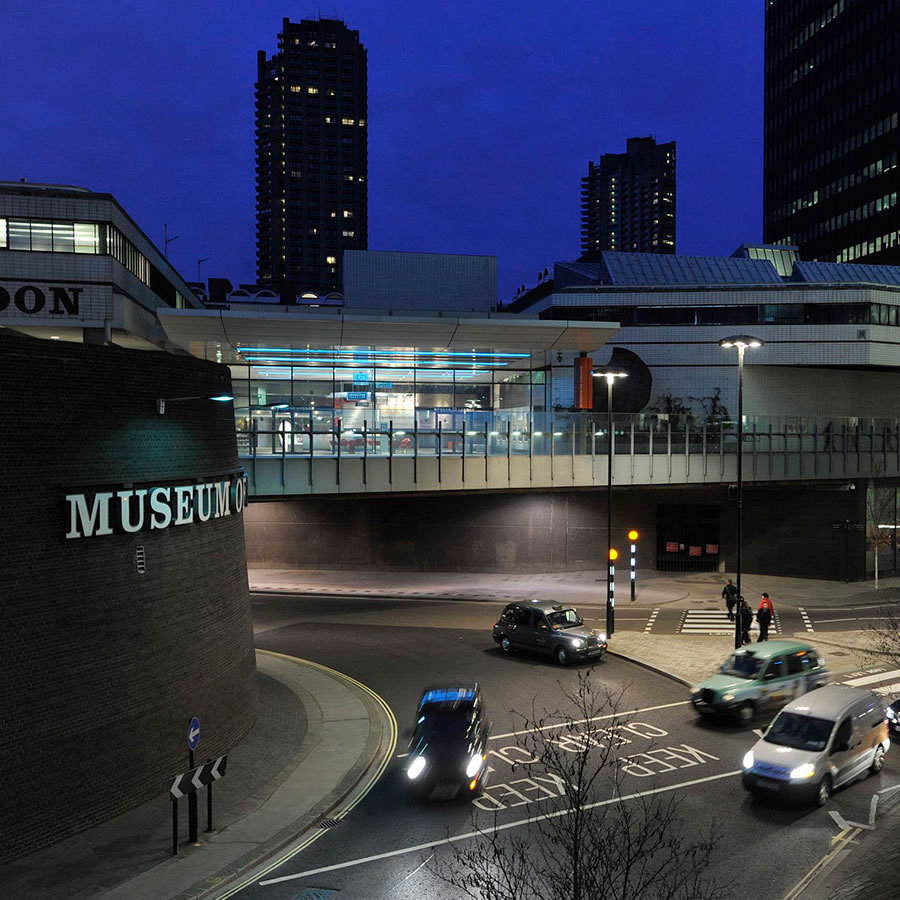EDITOR’S NOTE: This piece is reprinted here with the generous permission of Building Design, where it first appeared.
The idea of a new concert hall for the London Symphony Orchestra and other classical music producers has gained currency in the last six months, after its new conductor Simon Rattle raised it as part of his discussions about moving back to London. The imperfections of Barbican Hall as an acoustic venue seem to be widely agreed and, after some time, Boris Johnson has become a supporter of the idea. The government has agreed to fund a business case for the new venue and there is to be a favourite site.
Official opinion has coalesced around placing the concert hall into the site vacated by the Museum of London’s planned move to Smithfield’s General Market. In an urban cavity hard by the Barbican, the site is both a traffic roundabout and something of a pedestrian island, accessed by the fragmentary high-level walkaway that was to have replaced street pedestrian activity in the City in the Sixties. Location of the new hall would have to await the move of the Museum of London. With all this in mind, others have suggested an alternative venue on the north bank of the Thames at Blackfriars, opposite Tate Modern.
Now comes provocateur Léon Krier with his own proposal. Krier, a former associate of James Stirling, is perhaps best known as the designer of Poundbury for the Prince of Wales, along with a new town in Guatemala. What’s perhaps less known is that his love for classical music may exceed his love for architecture and urbanism.
Krier proposes a site redolent with both meaning and urban importance along what Terry Farrell has called the Nash Ramblas. The proposed Nash Ramblas stretches from the London Zoo through Regent’s Park down Portland Place past All Souls Church and down Regent Street to Piccadilly and thence to Trafalgar Square and Buckingham Palace.
Krier proposes to site the new complex, which he calls the London Music Forum, on Park Crescent at the terminus of Portland Place and the entrance to Regent’s Park. His elegant and typically lyrical site plan references both Nash and his own predilection for a playful classicism.
According to Krier, “a new concert hall, a chamber music hall, a state-of-the-art educational facility, practice rooms, restaurants and exhibition galleries can form a new urban ensemble that includes the complementary amenities required for successfully supporting the London Symphony Orchestra’s mission.” He also proposes a new Waterloo monument and a monumental portico to terminate the major vistas on the site.
With this proposal, Leon Krier reminds us that the siting of major cultural monuments is a decisive act in city making, and in the making of what Camillo Sitte called our collective memory. In linking the new music venue to Nash’s master stroke to create urban coherence out of a succession of individual London estates, Krier joins contemporary London to its ongoing narrative.

This proposal stands in sharp contrast to the commercial opportunism that characterises most urban regeneration, which seems to deny London’s essential character in favour of a kind of internationalism driven by the needs of investment portfolios. Cultural venues are seen merely as attractions or enhancements to commercial schemes and often seem dominated by retail and speciality food.
Whatever one thinks of the architecture, and I like the way it continues a conversation with Nash and neoclassicism, Léon Krier’s urban proposal has challenged us to see the new home for the London Symphony Orchestra not just as a complex which can fill a conveniently vacant site, but as an opportunity to add a significant monument in a way that enhances London as a great city. This is what Nash did with Regent’s Park, his grand boulevard and the planning of Trafalgar Square and is what post-war planners did with the Royal Festival Hall and the South Bank. Hopefully his counterproposal will be considered as the uplifting proposition that it surely is.
